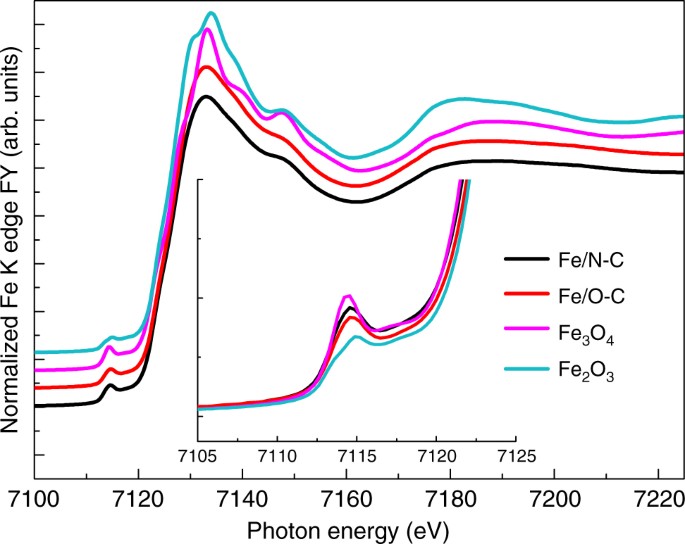
Authors (17): C. Genovese, M. E. Schuster, E. K. Gibson, D. Gianolio, V. Posligua, R. Grau-Crespo, G. Cibin, P. P. Wells, D. Garai, V. Solokha, S. Krick Calderon, J. J. Velasco-Vélez, C. Ampelli, S. Perathoner, G. Held, G. Centi, R. Arrigo
Themes: Design, BAG DOI: 10.1038/s41467-018-03138-7
Citations: 228
Pub type: article-journal
Pub year: 2018
Publisher: Springer Nature
Issue: 1
License: http://creativecommons.org/licenses/by/4.0
Publication date(s): 2018/12 (print) 2018/03/05 (online)
Pages:
Volume: 9 Issue: 1
Journal: Nature Communications
Link: http://www.nature.com/articles/s41467-018-03138-7.pdf
URL: http://dx.doi.org/10.1038/s41467-018-03138-7The carbon–carbon coupling via electrochemical reduction of carbon dioxide represents the biggest challenge for using this route as platform for chemicals synthesis. Here we show that nanostructured iron (III) oxyhydroxide on nitrogen-doped carbon enables high Faraday efficiency (97.4%) and selectivity to acetic acid (61%) at very-low potential (−0.5 V vs silver/silver chloride). Using a combination of electron microscopy, operando X-ray spectroscopy techniques and density functional theory simulations, we correlate the activity to acetic acid at this potential to the formation of nitrogen-coordinated iron (II) sites as single atoms or polyatomic species at the interface between iron oxyhydroxide and the nitrogen-doped carbon. The evolution of hydrogen is correlated to the formation of metallic iron and observed as dominant reaction path over iron oxyhydroxide on oxygen-doped carbon in the overall range of negative potential investigated, whereas over iron oxyhydroxide on nitrogen-doped carbon it becomes important only at more negative potentials. Trapping carbon dioxide within usable chemicals is a promising means to mitigate climate change, yet electrochemical C–C couplings are challenging to perform. Here, the authors prepared iron oxyhydroxides on nitrogen-doped carbon that efficiently convert carbon dioxide to acetic acid.
| Name | Description | Publised |
|---|---|---|
| 41467_2018_3138_MOESM1_ESM.pdf | Supl. data for Operando spectroscopy study of the carbon dioxide electro... | 2018 |
| 41467_2018_3138_MOESM2_ESM.pdf | Supl. data for Operando spectroscopy study of the carbon dioxide electro... | 2018 |
<< Previous Back Next >>